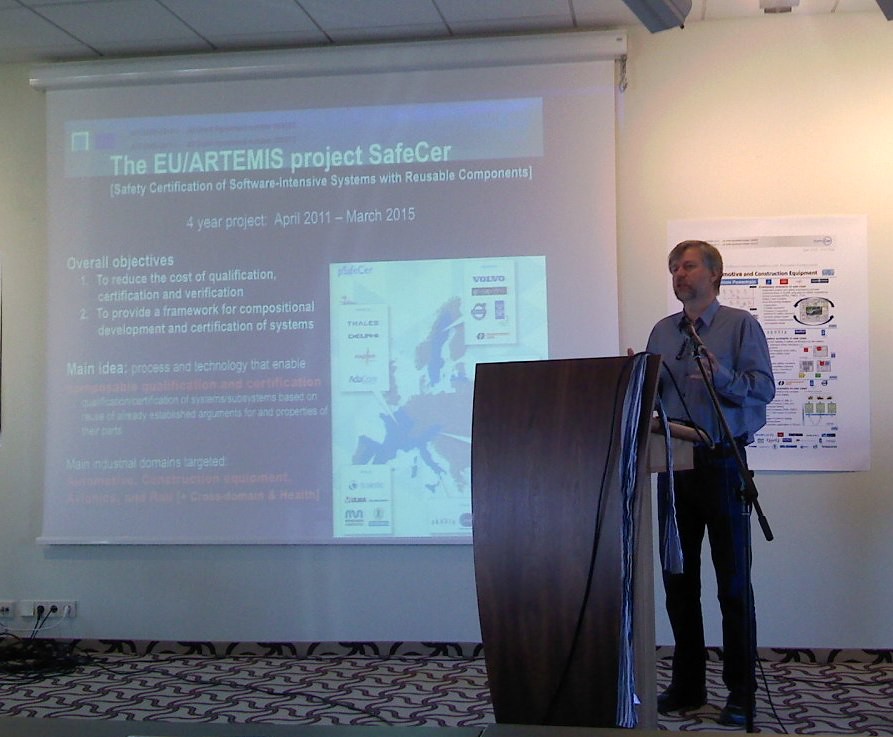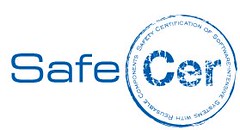The Final Open Workshop of the pSafeCer Project (pilot Safety Certification of software-intensive systems with reusable components) took place on Thursday September 26 2013 at Jurmala, Latvia.

This workshop presented the main outcomes achieved during the pSafeCer project related to safety argumentation, certification of components, component and process model. In addition, the prototypes for Certification Tool Framework and the Certification Artefacts Repository, implemented in the project, were introduced, as well as the conception demonstrators in the pSafeCer domains. The industrial domains targeted in pSafeCer are automotive and construction equipment, avionics, rail and cross-domain applications.

Supported by the ARTEMIS Joint Undertaking Call 2010 and National funding of the partners’ countries (Ministerio de industria, energía y turismo in the case of Mondragon Unibertsitatea), the pSafeCer project was launched in April 2011 and its target was increased efficiency and reduced time-to-market by composable, incremental safety certification of safety-related embedded systems.
pSafeCer brings together leading companies, universities, research organisations and SMEs across Europe (including OEMs, technology, tool, and competence providers, as well as certification and standardisation experts).

pSafecer is part of the Safecer project (p+n). The two-year pSafeCer (pilot SafeCer) project was started in 2011 and in 2012 started the tree-year nSafeCer project.
The overall objectives are:
- To reduce the cost of qualification, certification and verification
- To provide a framework for compositional development and certification of systems
The main idea is to get process and technology that enable composable qualification and certification: Qualification/certification of systems/subsystems based on reuse of already established arguments for and properties of their parts.
In the context of Safecer, Mondragon Unibertsitatea is working specially in railway and health domain as well as developing an educational use case.